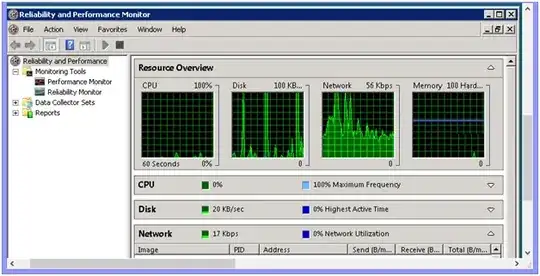I currently have two production servers. One running Windows Server 2003 and the other Windows Server 2008. When I open the Reliability and Performance Monitor I see a Network section that only goes up to 56Kbps see the image below.

It concerns me that 56Kpbs is the maximum bandwidth that our database server has available. This server is located on the other side of the world, and I have no way of physically accessing the network hardware. I've been instructed not to browse the internet on this computer or download things like adobe flash. This prevents me from doing a simple internet upload and download speed test.
How do I test the servers internet speed from the Microsoft Windows command line or equivalent that does not involve opening a browser on the server? I might be permitted to securely transfer a program after it is scanned for viruses to the server, but this is the least desirable option.